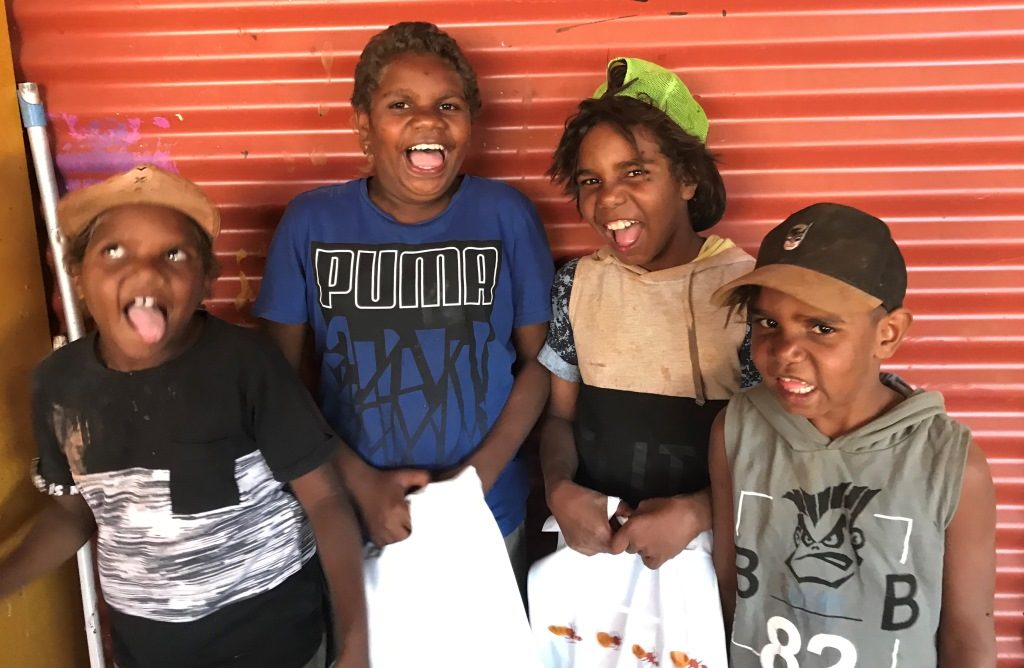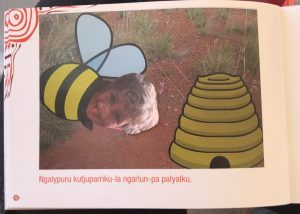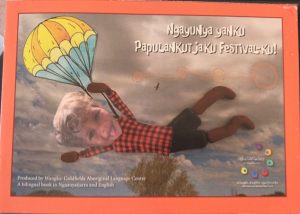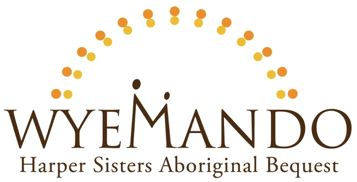Language at Blackstone Festival 2019
![]()
Interactive book-making to engage children and families in written Ngaanyatjarra and Pitjantjatjarra language at Blackstone Community’s annual festival

Goldfields Aboriginal Language Centre (GALC)
Blackstone Community
23 – 26 May 2019
Up to 1,000 children and their families from the Ngaanyatjarraku Shire will visit Blackstone for the community’s annual festival. Blackstone Community has asked GALC to run a stall at the festival with language-based activities for Ngaanyatjarra and Pitjantjatjarra children and families.
After consultation, GALC have designed an activity that aims to:
- engage up to 1,000 children and parents undertake a book making activity using Ngaanyatjarra and Pitjantjatjarra languages
- send up to 1,000 tri-lingual books home with children and families to be read and shared
- enable GALC linguists to assess the status of the two languages among the child population of the Ngaanyatjarraku Shire region
- give children, parents and the community the chance to share an enjoyable literacy experience in the children’s first language
- encourage children, parents and the community to start discussions about the status of language, use, and the need to teach children literacy in their first language
The activity
GALC have prepared a fun book for children to complete. The book is tri-lingual (Ngaanyatjarra, Pitjantjatjarra and English) and is graphically designed and professionally printed.
At the Blackstone Festival, children will pose for 10 face photos which match the activities in the book. These images will be printed out on GALC’s portable photocopier. The child will then cut out and glue their face photos onto the associated pages in the book. This will create a personalised book for each child.
Children will also be given a ‘show bag’ including alphabet charts in each of the languages, puzzles, colouring-in activity sheets and a variety of fun learning sheets in a booklet form. The learning booklet will focus children and families’ attention on the alphabet for each language and the spelling systems. These ‘showbags’ will go home with families and provide a number of tools for the family to reinforce language at home.


Encouraging first language literacy
Ngaanyatjarra and Pitjantjatjarra are healthy languages in the Ngaanyatjarraku Shire region. Most of the 3,000+ residents of the region speak one or both of the languages and both continue to be spoken as first languages by children.
However, local schools are English-only environments. Consequently, Ngaanyatjarra- and Pitjantjatjarra-speaking children miss developing literacy in their ‘cognitive language’ (the one they think and communicate in) first, instead skipping straight to English. This can devalue their first language in children’s minds and may contribute to pressure on those languages as young people increasingly engage with English beyond the classroom via the digital world.
This activity aims to reinforce the children’s first languages as valid and desirable. The books and associated materials will be humorous, highly stimulating and fun. They will provide each child and parent with a small toolkit which promotes literacy in the children’s first languages. The activity esteems the first languages – something that is critical to their survival among the 0-18 year age group.
Engaging secular community members in strengthening local languages
The NG Lands have experienced significant missionary activity, with 5 missions in the region. The missionaries focused on learning local languages in order to translate the bible. Consequently, there appears to be a strong contemporary link between speaking language and being a Christian. This may exclude or deter language group members who don’t identify as Christian from language strengthening activities.
Broadening the population base that embrace preservation of their language, by developing secular literacy resources to complement the existing Bible-based resources, will encourage the development of a stronger language preservation strategy. GALC is therefore keen to offer secular language opportunities that appeal to a wider range of locals.
Assessing the state of Ngaanyatjarra and Pitjantjatjarra among young people
During the activity, GALC linguists will chat to families about what language the children speak as a first language and gauge the level of language literacy amongst the NG Lands people.
This information will assist us to develop family language use and learning resources for the NG Lands people. For example, it has been suggested that a fortnightly or monthly newspaper written 100% in Ngaanyatjarra and Pitjantjatjarra would really reinforce language as a viable means of communication.
![]()
